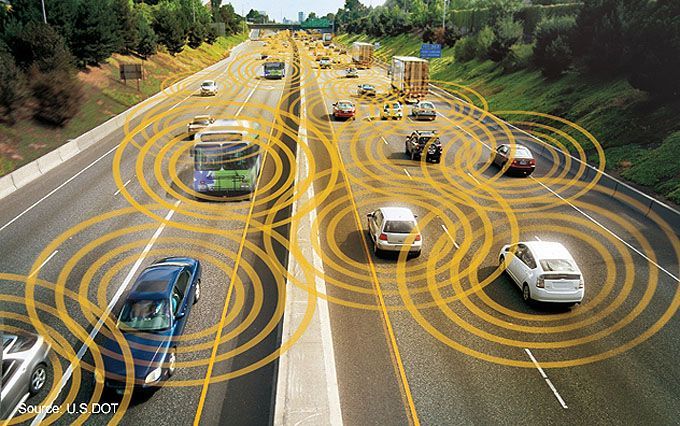
It is virtually impossible for an enterprise to function without the help of transportation. Transportation management is a backbone of the entire supply chain, and it ensures that the right product is delivered to the right customer at the right time and at the right place. Realizing the important role of transportation in the supply chain many enterprises have begun to rely on intelligent mobility solutions to streamline their supply chains.
However, changing regulatory environments, increasing labor costs and unpredictable fuel prices pose severe challenges in achieving a cost-effective supply chain. Additionally, mobile solutions are not effective in providing accurate visibility in the entire supply chain. In fact, considerable costs are incurred due to lack of real-time data about the personnel, equipment and transactions involved in the transportation process.
The Advent of IoT Solutions
Internet of Things (IoT) helps organizations and logistics companies to improve productivity by connecting various smart devices in the transportation network to a centralized cloud network. The real-time visibility of the entire logistics chain helps to capture mission-critical data that helps to improve operational performance and efficiency.
On the demand side, the IoT solutions will help companies to improve customer relationship and drive down distribution costs by providing security and enabling real-time traceability at the unit level.
On the supply side, enterprises can benefit from using an IoT solution for capacity sensing, planning and reporting, route optimization, energy-efficiency management and proactive fault/problem detection and resolution. The enterprise network monitoring solution will help to optimize procurement logistics and drive down costs. Thus, deployment of an IoT solution not only helps to create value for the customer but also for the enterprises themselves.
It must be realized that very few companies have managed to achieve end-to-end logistics visibility even though IoT solutions promise to improve productivity while cutting down costs. The streamlining of the entire transportation chain with an IoT solution is a futuristic scenario, and there are challenges to be faced before we realize the goal.
Integration Challenges
According to Deloitte, early adopters of IoT have failed to generate more value for the IoT devices as these solutions do not permeate each and every aspect of logistics or transportation chain. Merely, using IoT solutions to track the shipments severely restricts the scope of the evolving technologies. Efficiency can only be achieved if the IoT solutions help to build an advanced transportation ecosystem whose key stakeholders will be Business-to-business (B2B) customers, Third party logistics (3PL) or logistics service providers (LSPs), Warehouse and terminal operators of equipment, manufacturers and shippers.
The main challenge is about developing an IoT ecosystem as well as an IoT framework that will capture the technology’s value-creation potential. In fact, very few enterprises have managed to incorporate both the demand as well as supply-side logistics capabilities in their IoT ecosystem. The smart transport system realized by the IoT solution can only work if the interdependent stakeholder share information, work collaboratively by implementing advanced technologies. Unfortunately, most of the stakeholders in the logistics network work in silos.
Building an IoT Ecosystem
In a recent global IoT survey of 263 IT and business decision-makers, HCL Technologies, an Indian tech giant reported that 81% of respondents have either begun their IoT journey or plan to in the next 12 months. But over 50% of respondents felt they are already behind in fully harnessing IoT capabilities, and 43% said this failure negatively impacted customer satisfaction. (See full report here: HCL Tech Global IoT Survey 2017)
The first step in establishing an IoT ecosystem is to identify the key building blocks that bring together different stakeholder. These blocks will then have to be mapped to individual stakeholders and interconnected through an IoT platform.
Smart vehicles will always be the key elements of the ecosystem, and they will have to synchronize with other smart assets and terminals can provide valuable insights. These smart assets can be sensor-enabled forklifts, tractors, cranes, conveyor belts, automated storage, carousels, mobile handlers, dockyard doors, airport entry and exit gates that can be embedded with sensors to capture and relay relevant information. The smart workforce includes vehicle drivers who use smart apps and devices to receive valuable information for avoiding delays and traffic jams.
In an IoT-enabled smart transport ecosystem, all the details regarding freight, docks, vehicle, routes and the driver will be automatically captured, transmitted and analyzed for removing bottlenecks and for improving business processes. The main goal of the ecosystem is to enable various stakeholders like, customers, business managers, suppliers, operators and shippers to access relevant real-time data and use digital technologies to convert it into actionable insights.
Early Beginnings
Various organizations have already begun to experiment with the idea of an IoT-enabled smart transport system. Amsterdam Airport Schiphol is one of the first airports to deploy an IoT solution for tracking and monitoring baggage carts and non-motorized ground support equipment on the premises.
The Port of Hamburg uses an IoT-based ecosystem that connects different port areas with relevant stakeholders. Port managers used the system to gather information about closed bridges, congestion points, parking availability and other areas. The port management makes accurate decisions regarding the loading, unloading and routing cargo through the port area using analytics. The system enabled the Hamburg to streamline operations, improve goods turnover, reduce traffic and eliminate idle time in its supply chain.
McKinsey reports that port operators will be able to enrich customer experience by making effective use of advanced analytics to make decisions. In future, a well-planned IoT ecosystem will become an indispensable enabler for driving big data analytics.
A few innovative companies like DHL are already targeting to build a wider IoT ecosystem by achieving integration between transportation, logistics and warehouse systems. DHL has already begun to generate value by using the system to design customized route for each package.
The Road ahead
Barring a few digital leaders, a large number of enterprises have a long way to go before they make the best use of an IoT solution. Connecting the discordant systems that drive the supply side and the demand side of an enterprise’s logistic system is the key to success. A successful IoT ecosystem can only thrive if the enterprise forges cross-industry partnerships with various stakeholders and solution vendors.

Founder Dinis Guarda
IntelligentHQ Your New Business Network.
IntelligentHQ is a Business network and an expert source for finance, capital markets and intelligence for thousands of global business professionals, startups, and companies.
We exist at the point of intersection between technology, social media, finance and innovation.
IntelligentHQ leverages innovation and scale of social digital technology, analytics, news, and distribution to create an unparalleled, full digital medium and social business networks spectrum.
IntelligentHQ is working hard, to become a trusted, and indispensable source of business news and analytics, within financial services and its associated supply chains and ecosystems


























